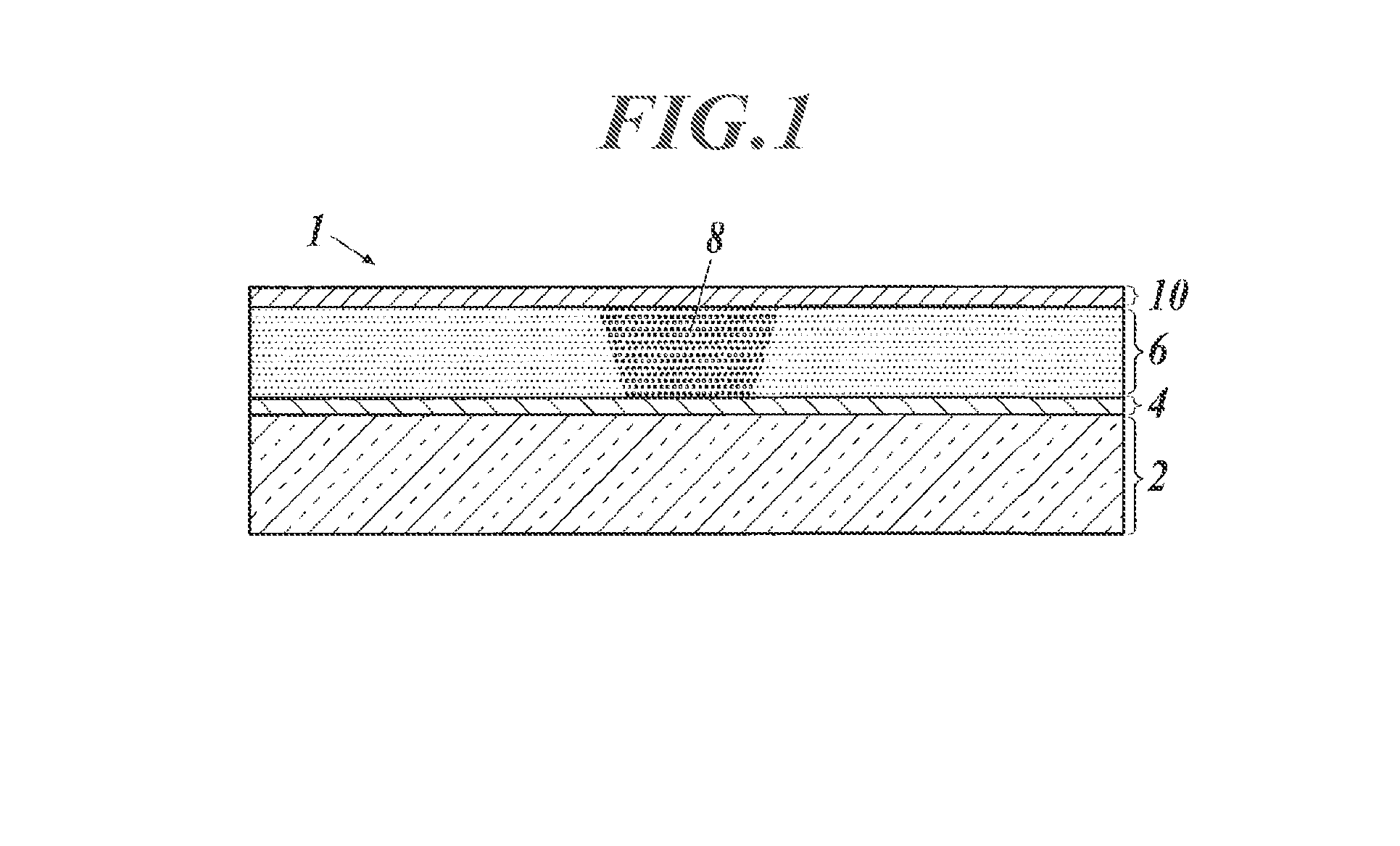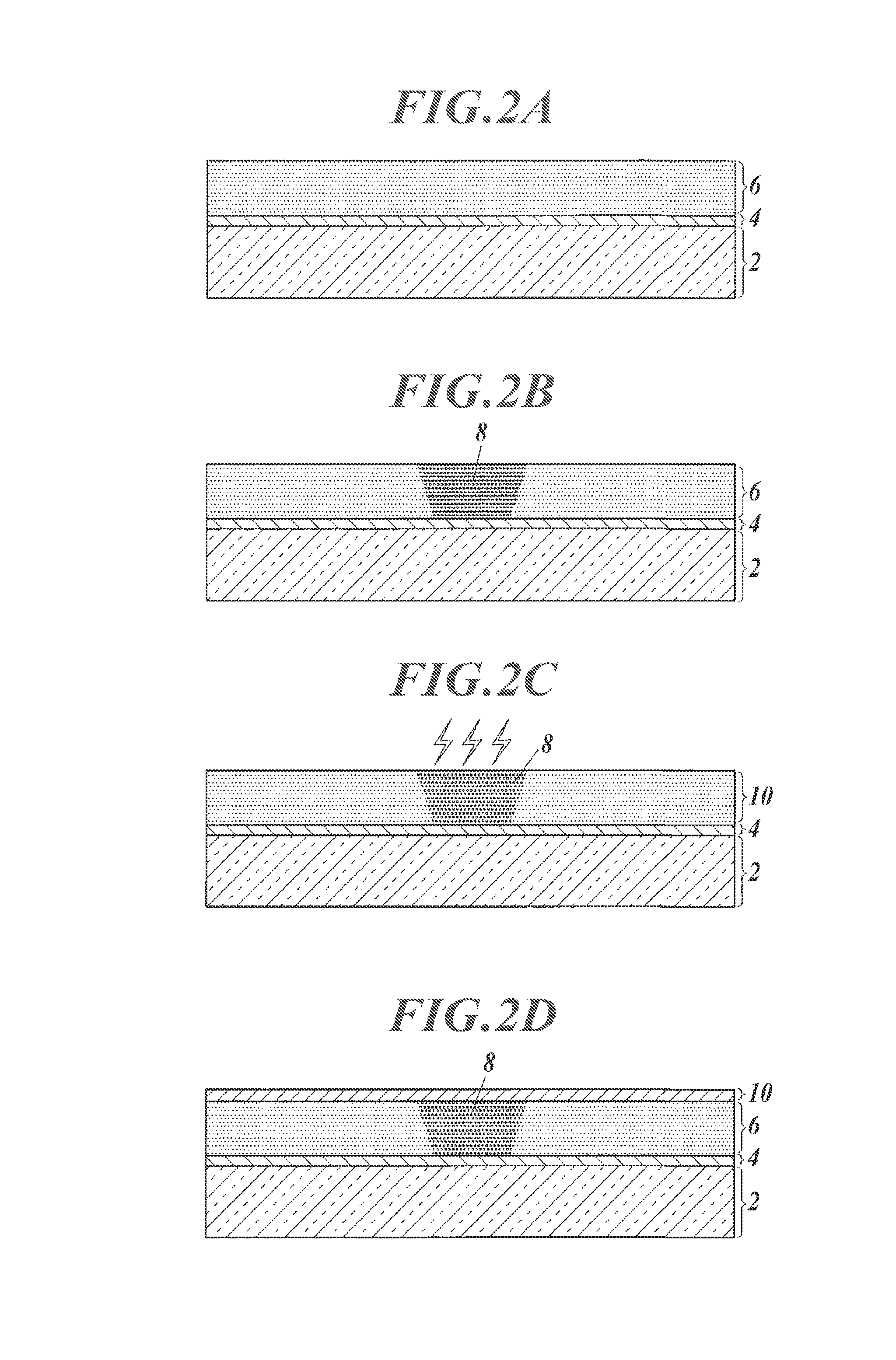Method for producing conductive substrate, conductive substrate, and organic electronic element
a technology of conductive substrates and organic electronic elements, applied in the direction of dielectric characteristics, sustainable manufacturing/processing, final product manufacturing, etc., can solve the problems of low heat resistance, many steps in the photoresist process, and the conductive substrates are discarded most of the time, and achieve less or no damage, high conductive
- Summary
- Abstract
- Description
- Claims
- Application Information
AI Technical Summary
Benefits of technology
Problems solved by technology
Method used
Image
Examples
example 1
Preparation of Transparent Conductive Substrate ACF-1
(Formation of Patterned Thin Metal Lines)
[0203]A polyethylene terephthalate (PET) film (thickness: 110 μm, dimensions: 180 by 180 mm) provided with hard coat layers on both surfaces thereof was prepared. A pattern of thin metal lines was printed on one surface of the film by gravure printing with a silver nanoparticle ink (TEC-PR-030; available from InkTec Co., Ltd.). The printing was conducted through a gravure printing pattern of a square lattice having a width of 30 μm and a pitch of 0.75 mm such that the average height of the thin lines became 0.8 μm after annealing. A compact thick-film semi-automatic printing machine STF-1501P (available from Tokai Shoji Co., Ltd.) was used. The pattern was printed in an area of 150 square millimeters.
(Annealing of Patterned Thin Metal Lines)
[0204]After printing of the pattern of thin metal lines, the patterned thin metal lines were annealed on a hot plate at 120° C. for 30 minutes to prepar...
example 2
[0244]A sample was prepared as in Example 1 except that that the pattern of thin metal lines was formed with a silver complex ink (TEC-IJ-010; available from InkTec Co., Ltd.), and was printed by an inkjet process.
[0245]The sample was evaluated as in Example 1. The results are similar to those of Example 1.
example 3
Preparation of Organic EL Element AOL-30
(Preparation of Transparent Conductive Substrate ACF-30)
[0246]An ITO transparent conductive layer (average thickness: 150 nm, dimensions: 50 by 50 mm) was formed on one surface of a clean alkali-free glass bare substrate (thickness: 0.7 mm, dimensions: 80 by 80 mm) by sputtering in accordance with a standard method to prepare Transparent conductive substrate ACF-30.
[0247]Transparent conductive substrate ACF-30 had a transmittance of 84% and a sheet resistance of 12 Ω / sq.
(Preparation of Organic EL Element)
[0248]Transparent conductive substrate ACF-30 was used as a first electrode (anode), and Organic EL element AOL-30 was prepared by the following procedure.
[0249]PEDOT-PSS CLEVIOS P AI 4083 (solid content: 15%) (available from Heraeus Holding GmbH) was applied onto the conductive surface of Transparent conductive substrate ACF-30 as the first electrode with an applicator (coating width: 50 mm) such that the dry thickness of the coating was 30 n...
PUM
| Property | Measurement | Unit |
|---|---|---|
| light transmittance | aaaaa | aaaaa |
| light transmittance | aaaaa | aaaaa |
| transmittance | aaaaa | aaaaa |
Abstract
Description
Claims
Application Information
 Login to View More
Login to View More - R&D
- Intellectual Property
- Life Sciences
- Materials
- Tech Scout
- Unparalleled Data Quality
- Higher Quality Content
- 60% Fewer Hallucinations
Browse by: Latest US Patents, China's latest patents, Technical Efficacy Thesaurus, Application Domain, Technology Topic, Popular Technical Reports.
© 2025 PatSnap. All rights reserved.Legal|Privacy policy|Modern Slavery Act Transparency Statement|Sitemap|About US| Contact US: help@patsnap.com



